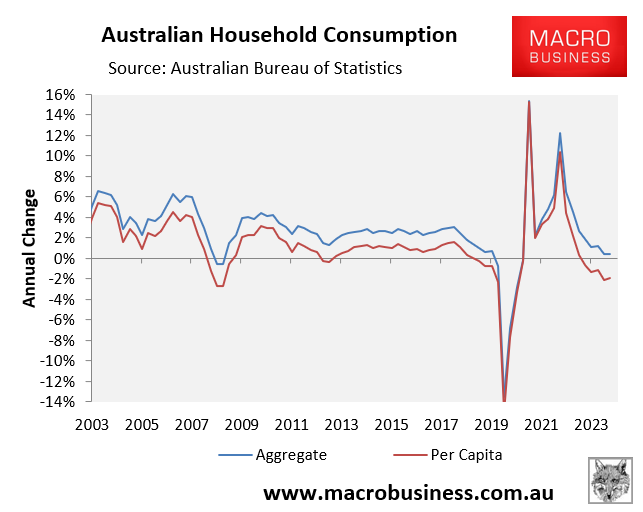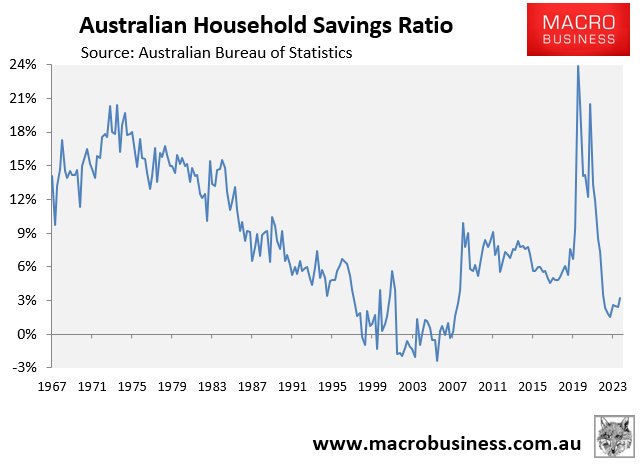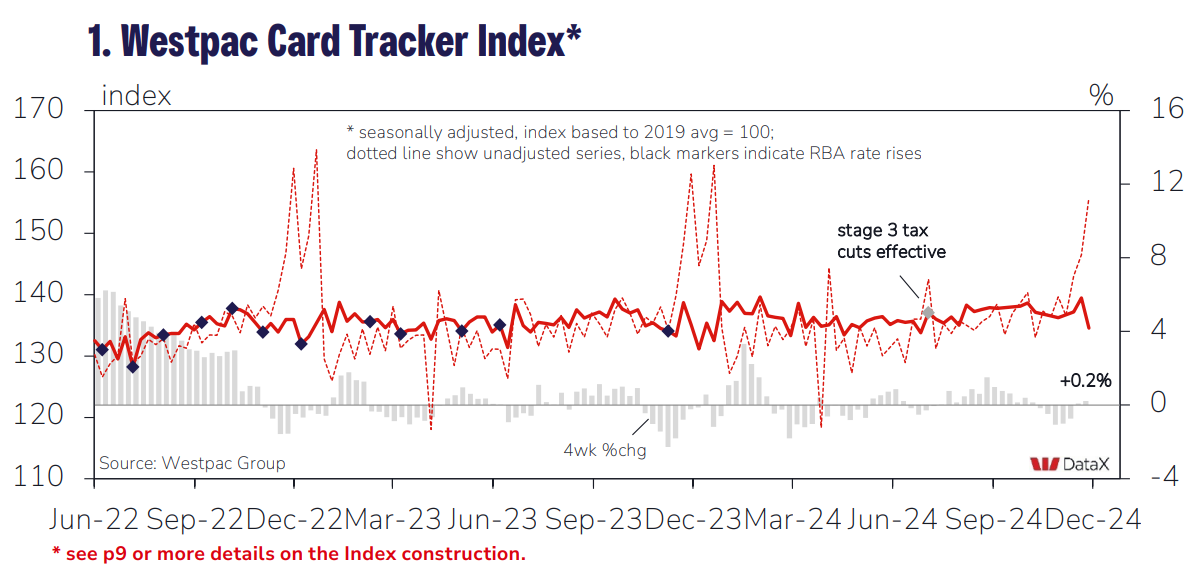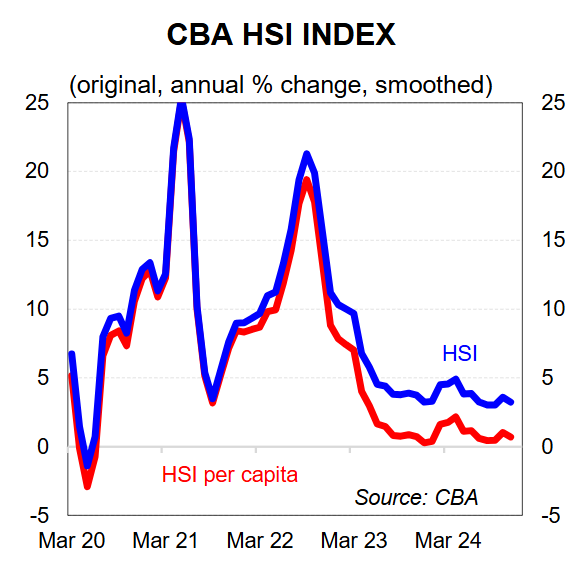Last week’s Q3 national accounts release from the Australian Bureau of Statistics (ABS) revealed that real consumer spending stalled despite households receiving the stage 3 personal income tax cuts.

The result suggested that households had saved rather than spent the Stage 3 tax cuts, which was also reflected in the rise in the savings rate.

Higher frequency data on household spending showed the trends continuing in Q4.
The ABS Monthly Household Spending Indicator (MHSI) for October revealed that nominal consumer spending in trend terms eased to 0.1% in October from 0.2% in September, with the annual growth rate also easing to 1.9% from 2.3%.

Westpac’s monthly card tracker also reported a sharp fall over the two weeks to November 30, declining 2.6pts to 134.6.

“The quarterly growth pulse eased further to +0.6%qtr, down from +1.2%qtr recorded four weeks ago”, noted Westpac. “Momentum has slowed back to the sluggish pace seen in late-August”.
CommBank’s Household Spending Indicator for November also recorded weak consumer spending, especially in per capita terms.

Analysis from Justin Fabo at Antipodean Macro shows that Australians have used the windfall from Stage 3 tax cuts to pay down mortgage debts.
As illustrated below, household mortgage offset account balances rose more than usual in Q3 as tax cuts inflated after-tax take-home pay. The increase in Q3 was around $5 billion more than a year earlier, according to Fabo.

This is good news from a financial stability and inflation perspective, as it will have lowered household and domestic demand, other things equal.

